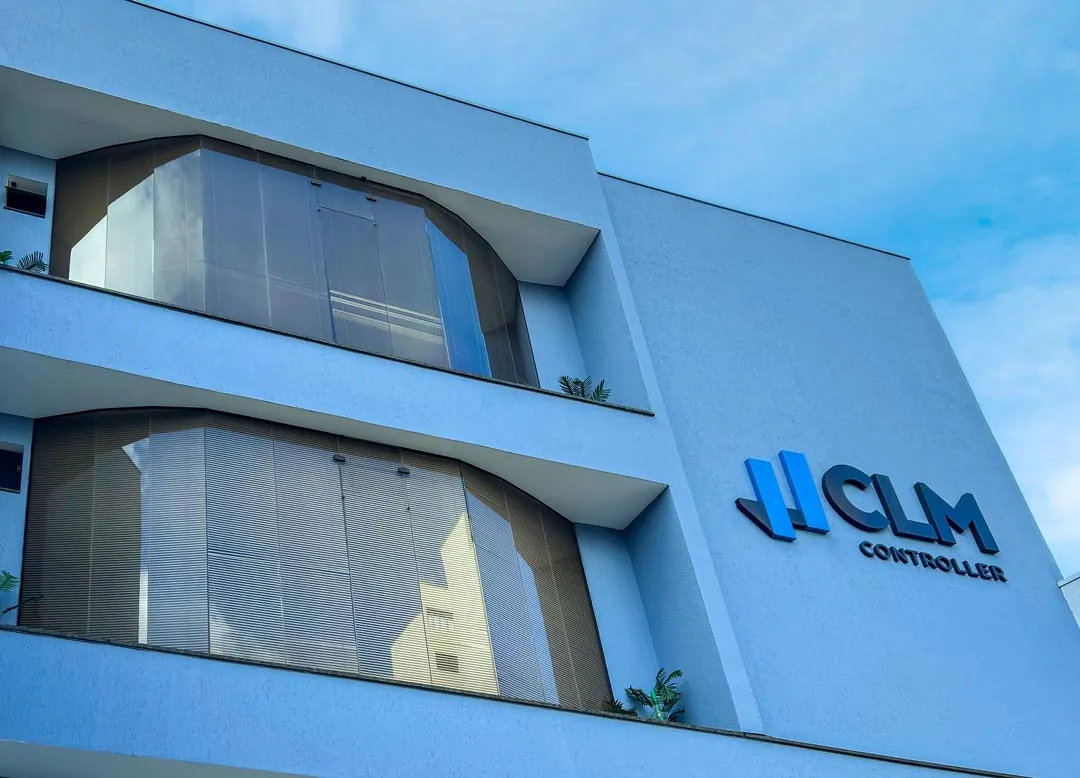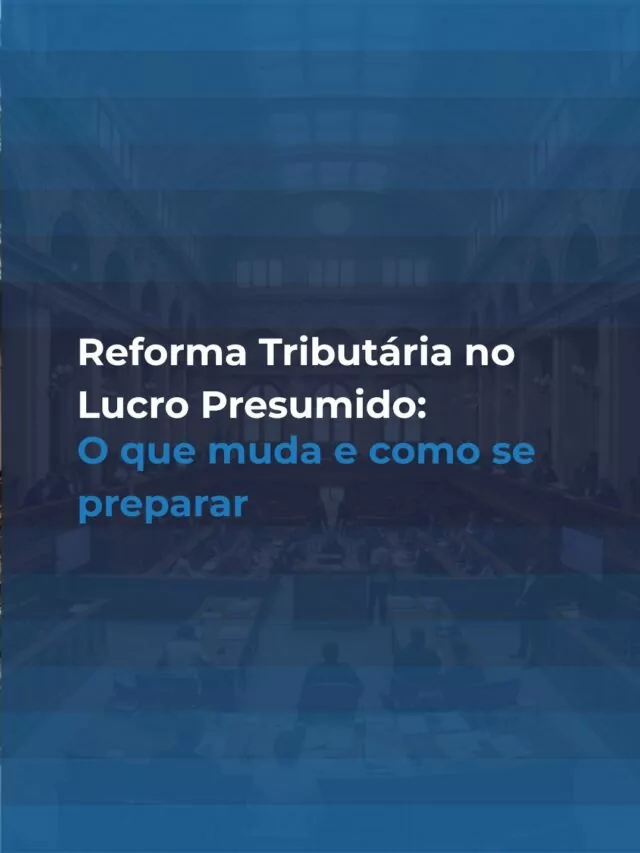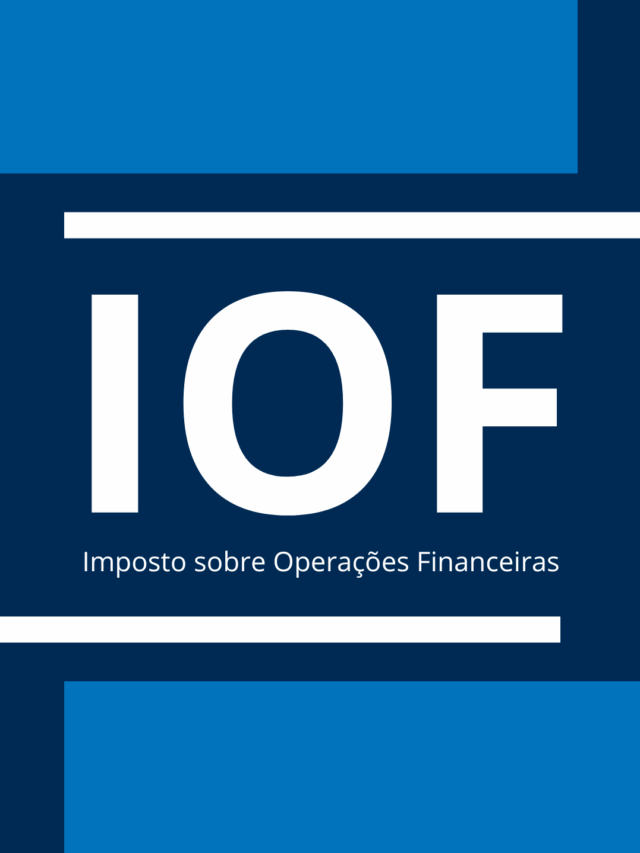In today's episode, Rodrigo Ribeiro e Renato Doria, partners at CLM Controller, discuss the main impacts of the Tax Reform on technology companies in a straightforward manner.
Consumption tax reform in Brazil (EC 132/2023 e LC 214/2025) promises to simplify the tax system, but will have a profound impact on IT companies. Basically, five taxes on consumption (PIS/Pasep, Cofins, IPI, ICMS and ISS) will gradually be replaced by two main taxes: a CBS (Contribution on Goods and Services) of federal competence and the IBS (Goods and Services Tax) shared between states and municipalities. In parallel, a dual VAT will be created, made up of the CBS and the IBS, whose reference rate is currently estimated at 26.5% (8.80% CBS + 17.70% IBS), as shown in the official tables of the proposal."
These changes will transform the tax burden on IT companies. Instead of the current "cumulative" structure (which generally amounts to ~8.65% of taxes levied on technology services, adding ISS, PIS and Cofins), we will move to a model of non-cumulativeAt each stage of the chain, it will be possible to write off tax credits paid on inputs and services.
In practice, this eliminates the cascading effect of taxes, but requires much greater control of tax documents and credits. For the IT sector (which is highly labor-intensive and has few taxable inputs), the impact can be twofold: the nominal tax rate goes up, but you gain the right to credits on inputs such as software licenses, energy, equipment rental, etc.
Also check out the podcast of this article, an objective conversation about how the Tax Reform will impact technology companies. Press play and understand how to prepare for the tax changes without losing competitiveness!

Complete Guide to
Tax reform
Old taxes vs. new taxes
The table below compares the current taxes levied on IT companies and their equivalents in the new system:
| Current Tax | Current Rate | New Tax (Reform) | Reference Rate |
|---|---|---|---|
| PIS/Pasep (cumulative) | 0.65% | Replaced by CBS (federal) | 8.80% (total CBS) |
| PIS/Pasep (non-cumulative) | 1.65% | Replaced by CBS (federal) | 8.80% (total CBS) |
| Cofins (cumulative) | 3.00% | Replaced by CBS (federal) | 8.80% (total CBS) |
| Cofins (non-cumulative) | 7.60% | Replaced by CBS (federal) | 8.80% (total CBS) |
| IPI | 0% to 15% (varies per product) | Extinct in most cases | 0% (except specific products) |
| ICMS (state) | ~12% (national average) | Replaced by IBS (state) | Part of IBS's total 17,70% |
| ISS (municipal) | 2% to 5% (varies by municipality) | Replaced by IBS (municipal) | Part of IBS's total 17,70% |
The reference figures above come from the official proposals and the technical presentation of the reform. According to official figures, the estimated total rate of Dual VAT is approximately 26.5%where 8.80% from CBS (federal) and 17.70% from IBS (state and municipal), with possible variations depending on the federative entity. The table shows how PIS/Cofins will be merged into CBS and ICMS/ISS into IBS, while IPI will be zero for most products.

Complete Guide to
Strategic Accounting
Impacts by tax regime
Simples Nacional (opting IT companies)
O Simples Nacional The traditional system will remain almost unchanged until the transition is complete. Those who remain in the unified system will continue to calculate taxes in the current way (without credits). However, a new possibility has been created: the Simple Hybridin which the company collects CBS and IBS separately (outside DAS) and thus can accredit inputs like the big ones.
This option makes it possible to generate tax credits (valuable when the company buys a lot of taxable services and products), but it means effectively paying a tax rate equivalent to that of normal companies - in other words, the burden goes up compared to the traditional Simples.
Joining the Hybrid Simples will be optional (biannual assessment in January/July) and requires careful analysis of costs versus benefits. In summary: an IT company in Simples can either maintain the current taxation in order not to increase the burden, but without taking advantage of credits; or migrate to the hybrid model, paying a little more per month and potentially gaining competitiveness with PJ clients who value credits.
Read also: What is the non-cumulative system of IBS and CBS?
Presumed Profit and Real Profit (medium and large IT companies)
For these companies, the new features include unified VAT. O IRPJ/CSLL remains governed by presumed or real profits, with no changes. On the other hand, everything else (PIS, Cofins, IPI, ICMS, ISS) will be dealt with by the common CBS+IBS model, regardless of the profit regime. In other words, there will no longer be different cumulative regimes: all pay CBS and IBS as non-cumulative VAT.
For Presumed Profit specifically, this ends the old cumulative PIS/Cofins of 3.65%. From 2027, these companies will pay CBS nominally at around 8.80% (the base factor for the non-cumulative system) and will be able to deduct credits in the case of expenses for related goods and services. In Real Profit, the change is less traumatic (there was already a non-cumulative system), but there will no longer be any distinction in VAT: Real or Presumed will only differ in the calculation of IRPJ/CSLL, not at CBS/IBS.
In a nutshell, IT companies that today pay approximately 8.65% on service revenues (5% of ISS + 3.65% of cumulative PIS/Cofins) should prepare for a rate of nominal much larger total (in the order of 28% VAT).
The final balance will depend on how much they can appropriate in credits: IT industries with high spending on taxable inputs (licenses, hardware, energy, etc.) can substantially reduce their net burden; but pure service providers (without many credit-generating costs) tend to see a real increase in taxes. In both regimes, it will be crucial to review prices, contracts and accounting structure so as not to be surprised by the new taxation highlighted "on the side".
Impacts on costs, payroll and incentives
Tax costs and pricing
With general non-cumulative taxation, companies gain transparency in taxation (the tax is highlighted on the bill and is based on the destination of consumption).
This could reduce the "cascading effect" on the final price of services. IT companies will be able to write off credits on various inputs (software, hardware, internet, water, energy, rent, etc.), which encourages investment in technology. However, the high tax rate of ~28% tends to put pressure on sales prices.
Those who don't adjust accordingly could see their margins squeezed. In addition, the transition imposes adaptation costs: updating systems (ERPs), implementing new tax routines, training staff and revising contracts will be necessary to avoid errors in the calculation of taxes.
Marcos Ribeiro, director of CLM Controller and tax specialist.
Payroll
A critical point for the IT sector is that the payroll will continue to generate no credit tax. Previously, part of the PIS/Cofins on payroll was not accounted for as a credit; now, under the new VAT, the cost of labor is fully accounted for. no credit.
In other words, the reform "taxes" the entire payroll at around 28%, without writing anything off. For a labor-intensive industry like technology, this could significantly increase operating costs and reduce margins, perhaps even forcing changes in the hiring model.
Tax incentives
The so-called "fiscal war" will end. Local benefits (exemptions or reductions in ICMS/ISS to attract companies) will cease to exist or will lose importance. Many IT projects that today depend on state incentives will need to be re-evaluated, as differentiation by location will disappear. This levels the playing field: the tax burden will no longer be a determining factor in choosing where to invest.
For good news, some strategic activities have been given special treatment: LC 214/2025 provides for exemptions or discounts of up to 60% in the tax rate for segments such as information security, R&D, health and education. In addition, destination taxation favors IT companies that export services (these remain exempt), and imposes the tax where the service is consumed.
Positive and negative points
- Positive points: The main advantage of the reform is simplicity and transparencyless different taxes, fewer ancillary obligations and clearer rules. Tax equality (the same rate for all companies, regardless of whether they are large or small) eliminates distortions between regimes. The non-cumulative system stimulates investment (you recover input credits), which can make IT inputs cheaper and encourage innovation. For corporate clients, it will be more attractive to hire IT companies that generate credits (taxes disbursed), which could increase demand for IT services with an adequate tax structure. The fact that exports of software and services continue to be exempt from tax maintains the sector's competitiveness on the international market.
- Negative points: On the other hand, many IT companies will feel a increase in the real tax burden. With the VAT rate at around 28%, pure service providers (who previously paid only 3.65% of PIS/Cofins) can reach more than 8% in practice. Startups and small businesses may come under more pressure, especially if they opt for the Hybrid Simples. Full payroll taxation puts pressure on costs, as we have seen, and the end of state/municipal incentives requires rethinking where to invest. Operational adaptation is complex: it will be necessary to map the place of consumption (destination) of each service, configure tax systems for multiple state and municipal rates, and restructure billing processes. In short, the reform brings advances in tax governance, but in the short term it tends to increase costs and compliance challenges for companies. IT companies.
Frequently Asked Questions (FAQ)
- Which taxes will cease to exist? The reform gradually abolishes PIS/Pasep, Cofins, ICMS and ISS. The IPI will have a zero rate for almost all products, except for preserving incentivized zones. It will be replaced by CBS (federal) and IBS (state/municipal).
- What are CBS and IBS? These are the new taxes of the VAT model. A CBS unifies federal consumption taxes (previously PIS, Cofins and part of IPI) and will have a reference rate of around 9.3%. O IBS replaces ICMS and ISS, being managed by the states and municipalities (estimated aliquot of ~18.7%). Together, CBS + IBS make up the 28% VAT quoted by the government.
- What about Simples Nacional? IT companies in Simples can continue as they are today, with no changes to the unified tax form (DAS). The big news is the Simple Hybridoptional: the company can pay CBS and IBS outside of the DAS. In this way, they can receive tax credits like large companies, but pay a rate equivalent to normal companies. This choice is made in January/July of each year.
- Changes to IRPJ and CSLL? No. The way of calculating IRPJ/CSLL (real or presumed profit) doesn't change with the reform. What changes is only the taxation of consumption. In other words, Presumed vs. Real only matters for IRPJ/CSLL, while everyone will pay the same VAT on consumption.
- When does the reform come into force? The transition begins in 2026. The end of PIS/Cofins and the full start of CBS (full rate of ~8.80%) are expected in 2027. The migration from ICMS/ISS to IBS will be gradual until 2033. Until then there will be test phases with lower rates and deadlines for adaptation.
- What about the payroll? Social contributions on salaries (which now cover part of the INSS, FGTS, etc.) remain the same. But with regard to PIS/Cofins/IBS, none payroll taxes generate credit. This means that you pay CBS/IBS on salaries without being able to offset it - which increases the effective cost of personnel.
- What about regional tax incentives? As a rule, state/municipal benefits (such as reduced ICMS, zero ISS for innovation etc.) expire. The unification of taxes and the destination principle make these exemptions irrelevant. IT projects that depend on incentives will have to be re-evaluated without considering the tax burden.
- How to prepare? The key is to review contracts, pricing and invoicing systems, as well as planning tax scenarios. Accountants and IT companies should work together to identify future tax credits and adjust processes. Staying informed (and relying on expert advice) is essential.
CLM Controller services for IT companies
CLM Controller is an accounting firm experienced in serving technology companies. With more than 30 years of experience in the market, our team (more than 90 trained employees) focuses on specialized accounting for IT. We offer complete accounting services, payroll, opening companies and, above all, tax planning adapted to the technology sector.
We understand the particularities of IT companies (outsourcing consultants, project management, special tax regimes, etc.) and help you structure your business to pay less tax legally. With technology in our processes and clear reports, we support you in migration to tax reformWe calculate scenarios, indicate the best regime (traditional or hybrid) and set up tax planning to minimize costs.
In short, CLM Controller contabilidade acts as a strategic partner for IT companies: combining digital accounting, tax advice and tax consultancy, we ensure that your business is up to date with the new legislation and benefits from the sector. Count on CLM to manage your accounting and plan your adaptation to the new legislation. tax reform - so you can prepare for changes without losing competitiveness.
Read more: Accounting for startups and tech companies: what you need to know to grow safely

Upgrade your finances:
Talk to us!












